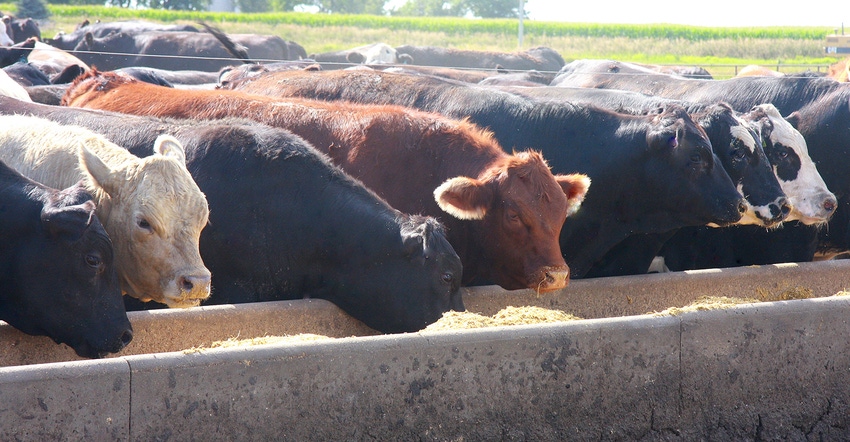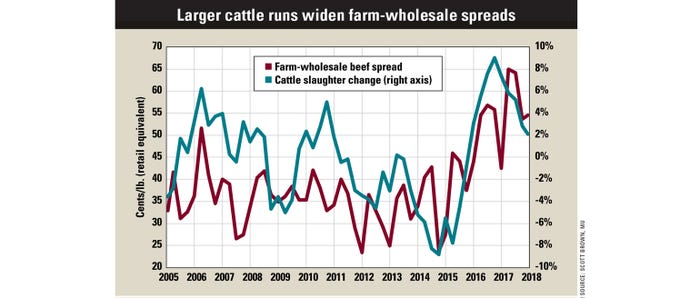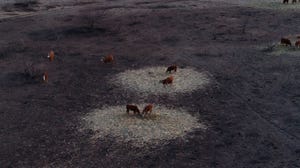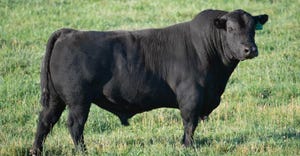Having more cattle on feed gives packers upper hand on pricing
Beef Outlook: Price gap widens as fed cattle prices come down 13.5% from last year.
June 4, 2018

By Scott Brown
Beef producers are seeing less value out of the gate, even though wholesale values remain strong.
Through Memorial Day weekend, choice wholesale beef values are up 2.6% for 2018 compared to last year, while fed steer prices have declined by 3.1%. The differences are even more pronounced in recent weeks, with fed steer prices down by 13.5% compared to a year ago for the first four weeks of May — a time frame in which Choice beef prices have only declined by 5.5%. How do we explain these wider wholesale-farm beef spreads?
Multiple factors expand value gap
One factor is declining cattle byproduct values. USDA pegs the April 2018 byproduct allowance at just over 22 cents per pound of retail equivalent, barely one-half the values posted in late 2014. Declining global demand for leather has been the largest driver of this decrease.
Increasingly large cattle slaughter runs are a larger factor at play in rising beef packer margins. Though total cattle slaughter capacity appears to be adequate to process the larger number of animals coming to market, feedlots have less leverage in the market as they hold more cattle in their pens.

Though feeders have some flexibility regarding how much weight they add to an animal before making a sale, adding too many pounds can make the problem of a large beef and total meat supply even worse; and recently, increasing corn prices make this alternative less lucrative as well. Packers understand that there are a lot of cattle that have to be moved, and they can adjust their bids accordingly in times of relatively high cattle on feed supplies.
It was only a couple of years ago this column noted that profitability appeared to be evening out across cattle and beef sectors following the record cow-calf financial returns in 2014 and 2015, a time when beef packers were struggling financially and some packing plants ceased operation. Since then, larger calf crops and larger number of animals on feed have continued, and the balance of power in the market has tilted increasingly toward packers.
Consumer still demanding quality
The good news for all involved in the cattle and beef industry is that product demand has remained strong.
While beef demand this year may not be quite repeating the amazing levels of 2017, any weakening has been relatively minor. This has kept the total revenue stream (in terms of consumer expenditures) up, moderating the declines in fed steer prices even as packer margins have increased.
There will always be ebbs and flows within a market as complex and closely related as the many sectors affecting cattle and beef production. It is important to remember that the forces of supply and demand often explain a large portion of these ebbs and flows: whether they are currently favorable for the sector in which your operation is involved, or whether they are squeezing your profitability.
Regardless of where your operation finds itself in terms of today’s market leverage, continuing to maximize the quality and consistency of your piece of the production chain will result in a better end product that keeps consumer dollars flowing into the beef industry.
Brown is a livestock economist with the University of Missouri. He grew up on a diversified farm in northwest Missouri.
You May Also Like



